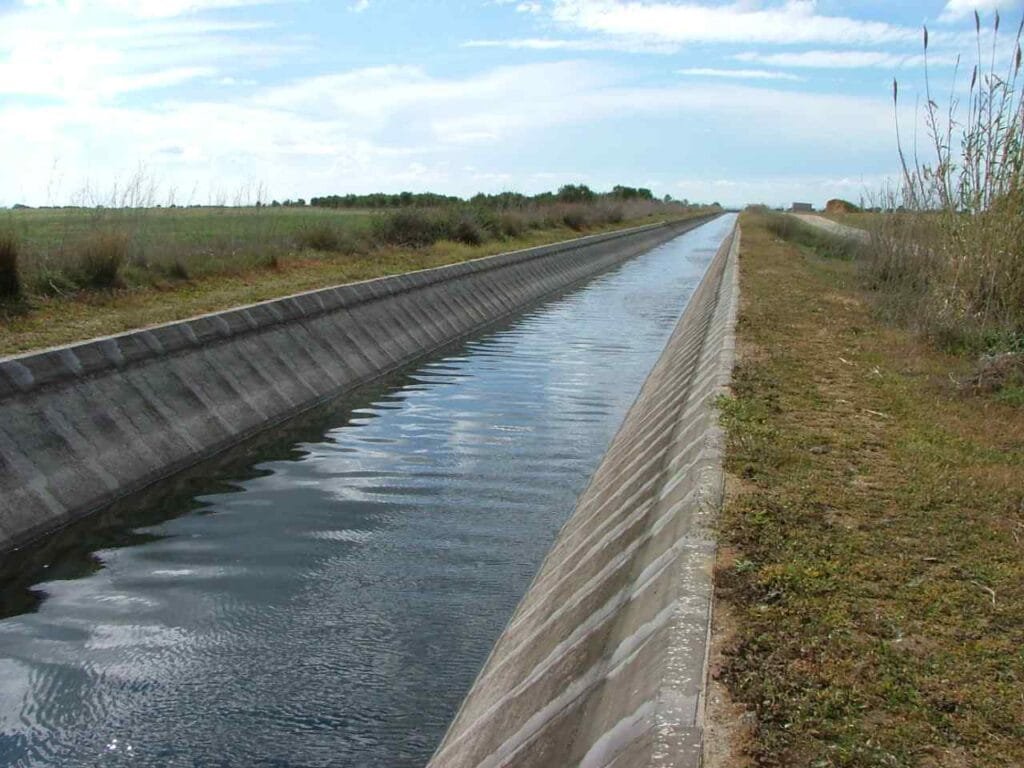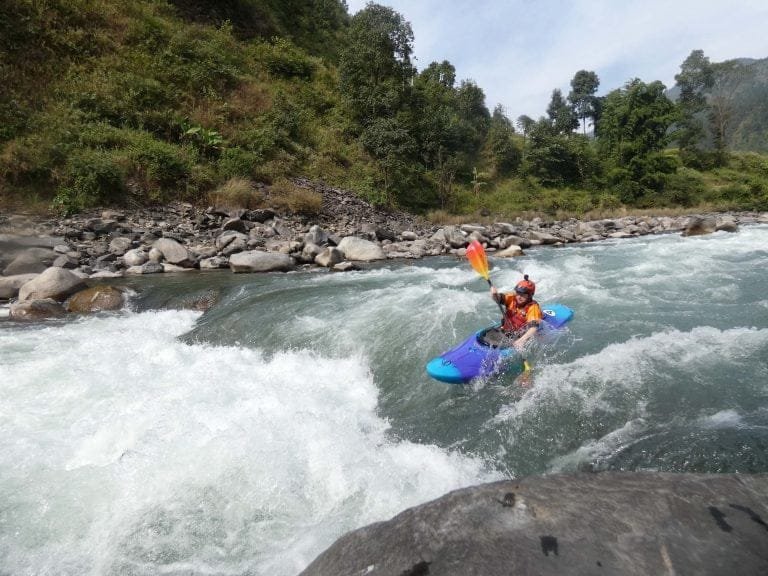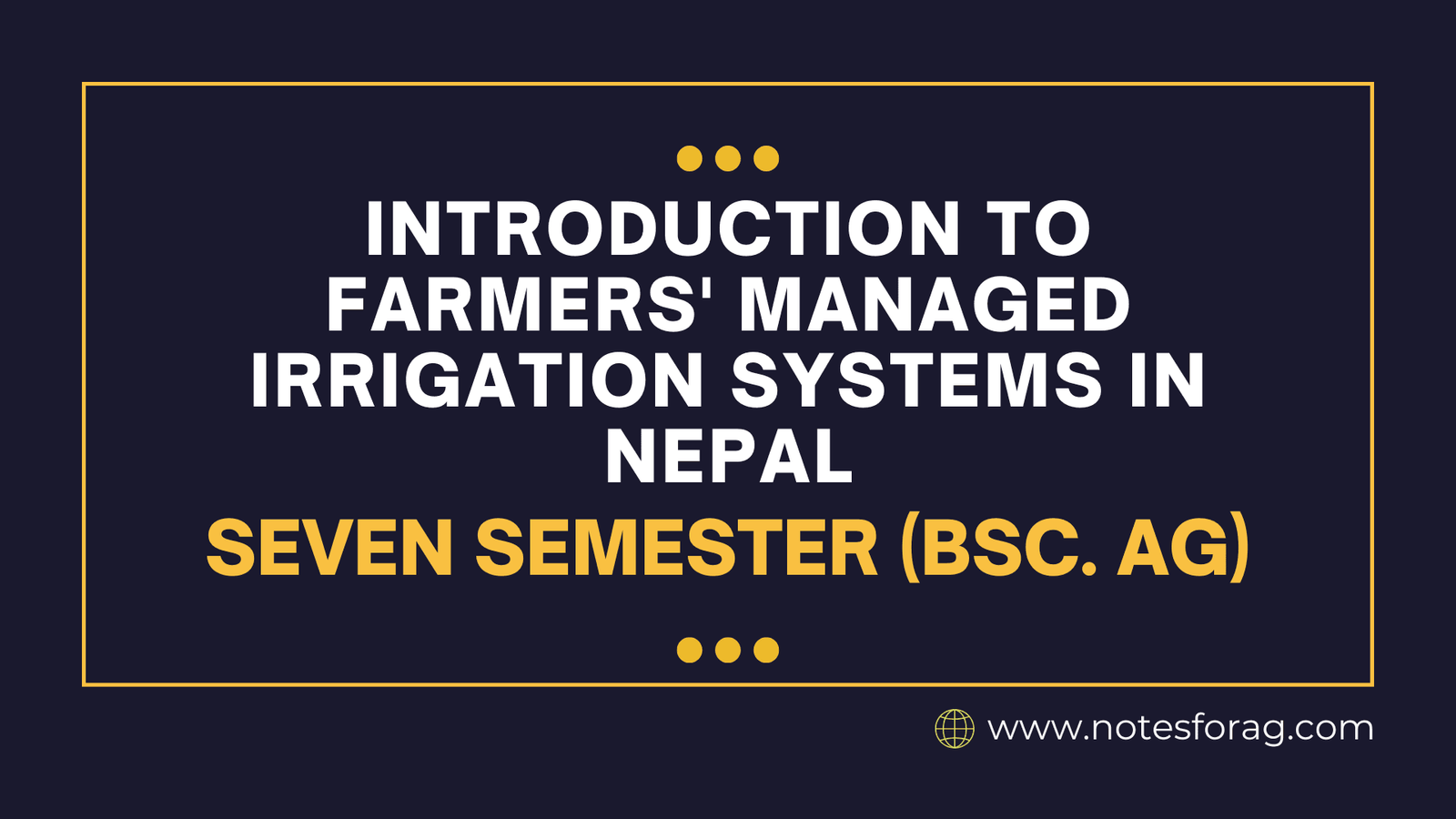Agriculture is the backbone of Nepal’s rural economy, and the majority of the population depends on farming for their livelihood. Although rainfall during the monsoon season is the main water source for agriculture, the importance of efficient irrigation systems becomes clear during the dry season. In this context, Farmers’ Managed Irrigation Systems (FMIS) have been essential in ensuring water availability, especially in areas lacking formal irrigation infrastructure. These systems are typically managed by local farmers who use their traditional knowledge to operate, maintain, and share responsibility for water distribution.
FMIS systems in Nepal are diverse, with each system tailored to the local geography and needs. From simple canals to more complex networks involving reservoirs and diversion weirs, these systems have been built and maintained by local communities for centuries. In many cases, the operation of these systems involves communal cooperation, where farmers collaborate to manage water resources, resolve conflicts, and maintain infrastructure. These traditional systems are crucial for smallholder farmers, who rely on them to irrigate their crops during the dry periods when water from rainfall is insufficient.
Table of Contents
Local Terminologies and Methods in Irrigation and Drainage Water Management
The terminology used in traditional irrigation systems in Nepal is rich and varies by region, reflecting local languages and practices. However, there are several common terms related to irrigation and drainage that are widely understood:
Pani (Water)
Water is considered a vital and sacred resource in Nepali farming communities. “Pani” broadly refers to irrigation water and is central to the local farming culture, with communities managing it according to traditional customs and practices.
Kulo (Canal)

A kulo is a small canal or ditch that carries water from a river, stream, or spring to irrigate fields. These canals are often dug and maintained by the local farming community to ensure water reaches their crops.
Sunaulo Kulo (Main Canal)
The sunaulo kulo is the primary canal in an irrigation network, from which water is distributed to secondary and smaller channels. Local water user groups manage these main canals to ensure fair water allocation among farmers.
Sarap (Water Allocation)
Sarap refers to the system of distributing water among farmers. This can be done using a rotational approach, where each farmer gets their turn to use water from the canal. The allocation may be based on land size or other traditional agreements.
Khola (Stream or River)

A khola is a natural water source like a river or stream that feeds into the irrigation system. Farmers may divert water from a khola using weirs or dams to channel it into their irrigation canals.
Pani Panchayat (Water Users’ Group)
A pani panchayat is a community-based organization made up of farmers who collectively manage an irrigation system. These groups ensure that water is distributed fairly, maintain the irrigation infrastructure, and resolve conflicts related to water use.
Pani Prabidhik (Water Distribution Techniques)
This term refers to the techniques used to distribute water efficiently across the fields, including the use of gates, weirs, and siphons to control water flow based on the crops’ needs.
Chal (Water Flow)

Chal refers to the movement or flow of water through irrigation channels. Managing chal involves regulating how water moves through the system to ensure that all farmers receive their fair share.
Pani Niyantran (Water Control)
This involves the methods used to control the flow and distribution of water in an irrigation system. Farmers use various tools, such as gates and sluices, to regulate water flow and prevent waste.
Drainage System (Nali)
A nali is a drainage system that helps remove excess water from the fields to prevent waterlogging, which can damage crops. Effective drainage is essential to maintain soil health and support irrigation.
Irrigation and Drainage Methods in FMIS
Traditional irrigation methods in FMIS are suited to the local environment and agricultural practices. Common techniques include:
Surface Irrigation
This is the most widely used method where water is applied directly to the field surface via canals or ditches. The water flows over the soil, soaking it and irrigating the crops.
Furrow Irrigation
In furrow irrigation, water is directed into narrow channels between rows of crops. This method allows for more controlled water use and minimizes waste.
Rainwater Harvesting
In areas with irregular rainfall, farmers use rainwater harvesting techniques to collect and store water for later use. Small ponds or reservoirs (called pokhari) are built to capture and hold rainwater during the monsoon.
Terracing
In hilly or mountainous regions, farmers often build terraces to make the best use of available water. The terracing helps reduce soil erosion and ensures that water is evenly distributed across the fields.
Conclusion
Farmers’ Managed Irrigation Systems (FMIS) are a testament to the ingenuity and communal spirit of rural Nepal. These systems have evolved over generations and continue to play a crucial role in supporting agriculture and rural livelihoods. They allow farmers to manage their water resources efficiently and sustainably, even in areas where modern infrastructure is not available. Despite facing challenges like water scarcity, climate change, and population growth, FMIS remain vital in ensuring food security and economic stability. Through collective management and community cooperation, these traditional systems ensure that water resources are shared fairly, benefiting farmers now and in the future.
Frequently Asked Questions (FAQ)
What is a Farmers’ Managed Irrigation System (FMIS)?
A Farmers’ Managed Irrigation System (FMIS) is a traditional irrigation system in Nepal where local farmers collectively manage the water distribution, maintenance, and infrastructure. These systems are typically found in rural areas where modern irrigation infrastructure is lacking, and they rely on community cooperation to ensure water is distributed equitably and used efficiently for crop irrigation.
How is the maintenance of FMIS carried out?
Maintenance of FMIS is generally a community effort. Local farmers, often organized in a Pani Panchayat, take on the responsibility of cleaning canals, repairing infrastructure (such as gates and sluices), and ensuring that water is distributed fairly. Regular meetings and communication help address any issues and make decisions on repairs or improvements.
Related Articles

